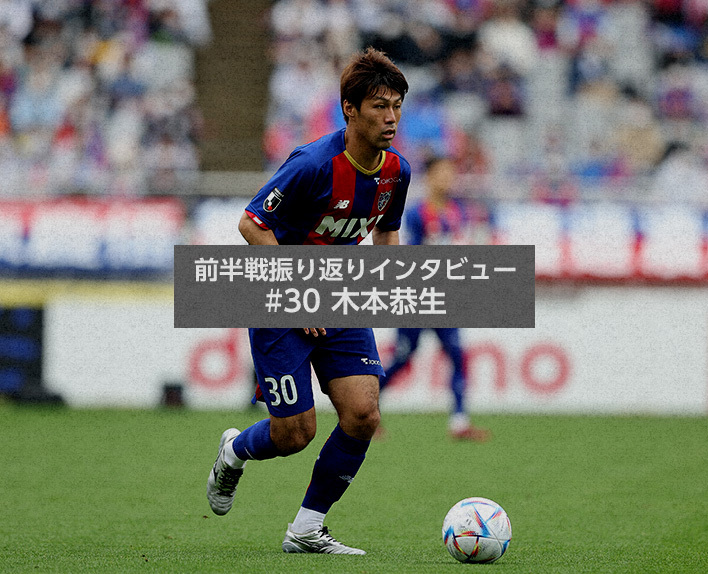<Match Review>
In the middle of the week, sandwiched between the Levain Cup match against Avispa Fukuoka, we welcomed the 14th round of the J1 League in just 2 days. With a tight schedule, we will play 3 games in just 3 days starting today. For Tokyo, who have been struggling to win in the league for 3 games, this is an important match to turn the tide and gain both confidence in their soccer style and 3 points at this point in the season.
The opponent, Kashiwa Reysol, is in good form as they are currently in 4th place. As for Tokyo, who has dropped in rank in the past 3 games, they will aim to gain 3 points and keep up with the top teams. Captain Masato MORISHIGE, who was out due to injury, has returned to the team and will face a young and energetic Kashiwa team along with a stable defense.
Tokyo was the first to create a chance right from the start. In the 3rd minute of the first half, a sharp pass was sent to left winger Adailton, and Shuto ABE dove in to the ball that was dropped between defenders with a one-touch, exploiting the gap and moving towards the goal. Although his shot was blocked in a one-on-one with the goalkeeper, it showed a direction to break through the attacking zone with a change of pace. However, from this point on, Kashiwa increased their intensity at the ball and it became difficult to build up play, leading to more time being spent on the back foot. In the 20th minute of the first half, they targeted the space behind the defensive line, but Jakub SLOWIK closed the gap at the right moment and made a block with his body. In the 25th minute of the first half, they allowed an incursion deep down the right side, and a sharp ball was sent into the goal area, but this too was saved by SLOWIK, escaping danger. Towards the end of the first half, there were more instances of carefully moving the ball, and they had more time to push the opponent back, but they couldn't create a fast-paced breakdown like at the start due to the opponent's quick return. On the defensive side, Tokyo also responded quickly to the opponent's fast vertical attacks, preventing any decisive situations and taking the game into halftime.
In the second half, the opponent, who had strengthened their vertical propulsion, pushed our formation down and we struggled to mount a counterattack. In the 15th minute of the second half, we were awarded a free kick outside the penalty area, and Matheus SAVIO aimed for a direct shot, but it hit the crossbar. Tokyo's tempo in attack did not increase, but in the 22nd minute of the second half, Hotaka NAKAMURA crossed the ball from the right side, and the ball that hit the opponent defender near the goal spilled in front of the goal, and Ryoma WATANABE, who was closing in, touched it with one touch, but it went wide of the goal. In the 28th minute of the first half, Ryoya OGAWA saw that the opponent's defensive line was high and sent the ball behind them. Kensuke NAGAI, who came on as a substitute, broke free and aimed for the goal from a difficult angle on the left side of the goal, but his shot hit the corner of the goal and was saved by the opponent goalkeeper.
In the 32nd minute of the second half, Adailton received the ball on the left side and swung his right foot powerfully from the cut-in, but the ball went over the goalkeeper's extended arm and hit the crossbar.
As the pressure towards the goal increased and the expectation of shaking the net grew, in the 44th minute of the second half, a corner kick from the left was packed in the chaotic battle in front of the goal and the goal was broken, but it was cancelled due to a handball decision with the support of VAR. They tried to counterattack in the remaining additional time, but were unable to break the goal and the game ended in a 0-0 tie.
[Albert PUIG ORTONEDA Interview]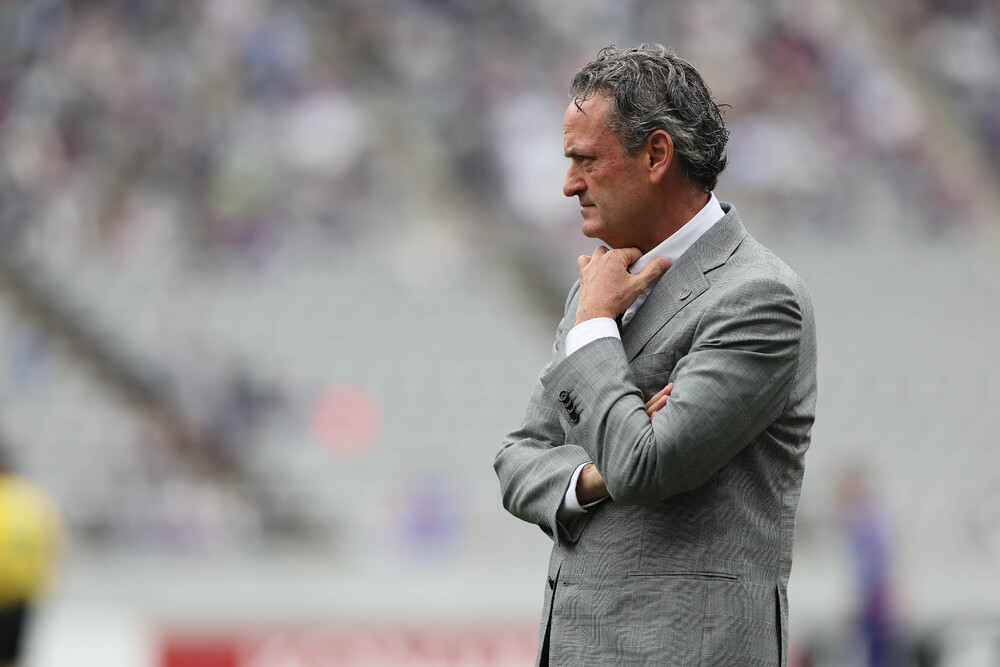
Q: please review the game.
There was a decisive chance right after the kickoff. I think the game would have had a different outcome if that chance had been taken. This season, the J1 League is very competitive. The flow of the game is greatly influenced by whether or not you can make those crucial moments count.
After that, I think we had a long period of time where we were able to move the ball well and dominate the game, but there were too many passes at our feet and we didn't make enough plays to take advantage of the space.
The team has been spending a long time pushing forward. In the midst of that, we are working on improving our ability to guard against counterattacks after losing the ball. Today, we saw some improvement in that aspect, but we still need to improve further and also reduce the number of times we lose the ball. In the second half, we had about 15 minutes of good momentum. We wanted to take advantage of the chances we created and control the game, but we couldn't.
The second half continued with a close match. There were chances for Kashiwa, and there was a possibility of losing if they were scored. The opponent scored from a corner kick towards the end of the game, but the goal was canceled with the support of VAR. It was a close match where it was possible to lose if that had been scored.
In the past few games, the team has been able to control the game for longer periods of time and I think we have been able to express that the team is growing in a positive direction. However, there have been some instances where we have easily lost the ball that we should not have lost. From those situations, the opponent has been able to create chances, so we need to improve a little more and make sure we don't lose the ball unnecessarily.
The days I have played with this playing style are not yet long. There are still unbalanced parts, such as too many plays at the feet or too many plays to the space. I must grow to be able to balance the plays at the feet and the plays to the space. For the players, I think it is difficult because we are asking for plays that are clearly different from the soccer they have been playing so far. However, I have no doubt that the playing style we are aiming for will lead to the growth of each player. The team is moving in a good direction.
If we could have brought Leandro on in the second half, he would have brought a lot to the team, and I think if we could have brought Keita YAMASHITA on in the second half, it would have similarly benefited the team. However, both of these players have been feeling discomfort, so they have been away from training. Additionally, during today's match, Diego and Nagatomo also felt discomfort, so they were substituted early.
Q, please tell us as much as possible about the discomfort that Nagatomo player mentioned.
A, from the beginning of the season, we have been telling the players to stop playing if they feel any discomfort. Playing forcefully can lead to serious injuries. We are instructing them to speak up immediately to prevent the risks from escalating.
Nagatomo felt a bit of discomfort, so I brought in Hotaka NAKAMURA. I think Hotaka covered for Nagatomo's absence well. Nagatomo's condition is not serious enough to be called an injury. He had some discomfort, and I thought he had fully recovered, but that may not have been the case. Just to be safe, I decided to substitute him. I don't think it is a cause for concern.
Q: The opponent's midfield defense was solid, and it seemed like our midfield trio was being contained. How did you prepare for that?
Yes, I can answer that. What I always expect from the players is to make appropriate judgments and break through the situation. Of course, we can predict the opponent's movements in advance as part of the game plan. However, the game doesn't always unfold as expected. I expect the players on the pitch to fully understand what is happening in the game and solve problems as they arise. For example, in the second half, Ryoma WATANABE was deployed as a right winger. That was because we expected him to come in from the side and play in the center. I believe it was one of the planned breakthrough strategies.
It is indeed impossible to convey all the anticipated problems and their solutions to each player during the match. Rather, I believe it is more effective to develop the ability to recognize problems on their own and to learn how to solve them through smart play. For example, today, Diego made several good runs behind the defense, but the ball holder was not aware of those plays and could not utilize them effectively. That is one of our areas for improvement.
At the beginning of the season, we aimed to avoid playing in the center as much as possible and build up our play. The opponents naturally come up with countermeasures for this, and as our team's completion level increases, we gradually start using the center more. There are also good plays happening in the center. However, there is a flow where we lose the ball due to unexpected mistakes and the opponent's attack is born from there, so we need to improve on that point.
We are asking players who have been playing with different play styles for about 4 seasons to clearly seek a different play style. It is very difficult to adapt to it. We are asking players to solve the problem themselves. I think it is a difficult task for the players. However, by continuing this, if each player can realize the problem and overcome it on their own, the completeness of the team will increase dramatically.
[Player Interview]
<Kensuke NAGAI Player>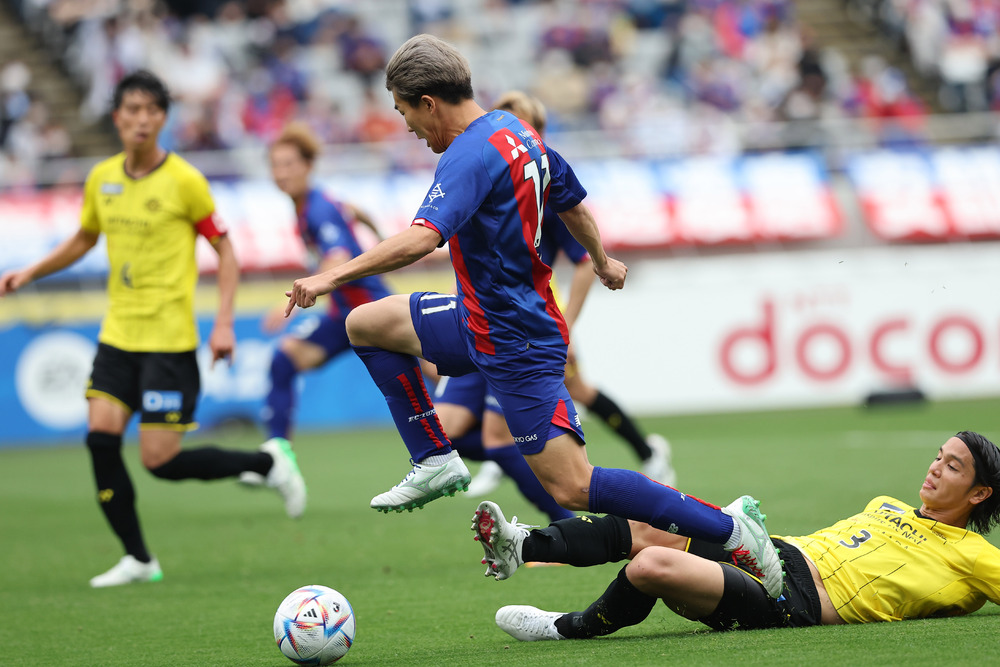
Q, how did you see the attacking part from the bench until you entered the pitch?
A, since there were no players who could break through behind the opponent, I was watching with the intention of receiving the ball behind and making the opponent's defense stretched out.
Q, did you actually feel an improved sense when you stepped onto the pitch?
A, I feel responsible for not being able to score when I had a couple of chances. I think the game would have turned out differently if I had scored. I feel that we need to challenge ourselves to increase the number of opportunities in front of the goal from the first half.
Q, Coach Albert Puig Ortoneda says that the team is starting to get a grip on the ball and it's the next stage, but as a forward player, how do you feel about the sense of accomplishment and challenges?
A, I feel that the opponent is gradually studying, so we also need to come up with ideas and feel that we need to increase the score by doing something extra. We want to focus on the accuracy of crosses after pushing in, who goes where, and how we compete.
Q, I came on as a substitute and immediately created a chance. After that, there were also times when the ball didn't come out easily.
A, there is also a relationship with teammates, and we discuss areas for improvement among players even after the game. I think chances will gradually increase, and I want to continue demanding and doing it in the future.
<Yasuki KIMOTO>
Q, do you have the impression that you were able to hold the ball firmly when looking back on today's match, or do you have the impression that you were able to hold it but it didn't go well afterwards?
A, not only today's game but also several games where the results have not been achieved, even if the possession rate is higher, it is not scary for the opponent, and rather gives the impression of being imposed. I think how much unpleasant ball movement and attack can be done for the opponent is an important point that will change the flow in the future.
Q: How did Kashiwa think about breaking through as a team while tightening the center?
Even though we are gradually able to play the football we want to play, it is not something that can be done 100% right away. I think it is difficult to score without the ability to exploit the opponent's weaknesses during the game. Therefore, I would like the players to communicate their opinions more and work together to improve.
Q, although we couldn't win, how do you perceive the fact that the losing streak has stopped?
A, I wanted to win at home, but there were also moments where we were helped by VAR. There have been some issues with how we finish games in the past few matches, so I want to make sure we stay focused and finish the game until the end.
Q: Is the ideal style of football somewhat permeating, or is it still in the process of permeating but facing countermeasures from opponents, resulting in a situation where it hasn't quite reached the next level?
A, there is a sense that the soccer the coach is looking for is gradually being achieved, but there is also a sense of a gap with the style of the previous year.
<Ryoma WATANABE>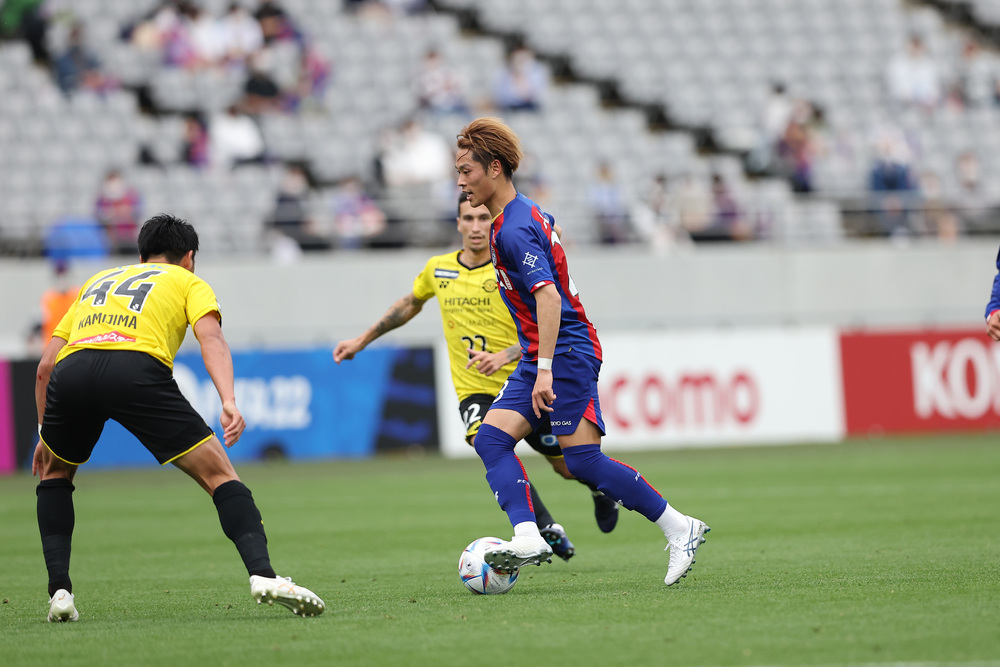
Q, how was it to enter the game in the middle of the second half?
A, because the three players in the front line were moving in the same way, I thought it was necessary for me to receive the ball in the middle when I entered the game, and I think the coach put me in the game with that intention. (Nakamura) Hotaka played on the side and I made some good plays by moving inside. Of course, there were scenes where I could have scored a goal myself and I had to score, but I think it was good that I was able to make changes in the game.
Q, what was your goal during the time you had possession of the ball?
A, just holding the ball doesn't mean anything, so I thought it was important to break the opponent's defense by making vertical passes. If the opponent's defense has five players, there will be space in the midfield, so I imagined taking advantage of that. I think if the game had continued a little longer, there might have been a chance for a goal, like towards the end of the second half.
Q, what did you think about the opponent's attempt to counterattack after stealing the ball?
The players at the back were able to manage the risks well against the counter, so when I played, I entrusted the back players and focused on what I should do. I was only thinking about scoring.
Q, how was the teamwork as a team?
A, the current situation has changed depending on who is playing in the game. It is important to play according to the soccer that Coach Albert PUIG ORTONEDA desires, taking into account the characteristics of each player. However, a base is necessary even within that. If we cannot do that, it will become a difficult situation, so I think we can grow by creating it together while communicating with each other.
Q, there were many scenes where crosses were raised while effectively using the sides.
If you attack from the sides, the center will become open, and conversely, if you attack from the center, the sides will become open, so it is important for the players to have a common understanding of how to use this. I think we were able to do that towards the end of the game and come close to scoring. The most important thing is to score, so we need to work harder towards that goal.
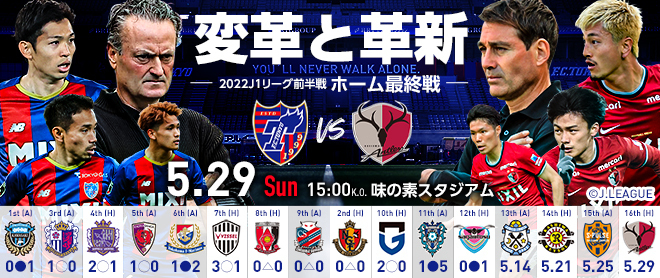
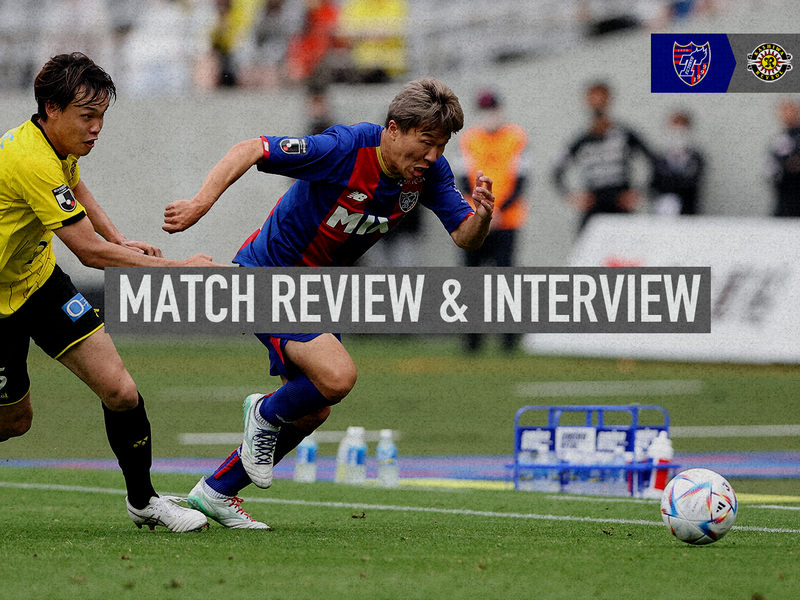



![Takashi FUKUNISHI x Naohiro ISHIKAWA CC Discussion
"The Allure of Tokyo's Players [MF/FW Edition]"](/en/upload/Tokyoism/images/img_242_62879a9a-0314-43cb-bd48-1e9f0a000292.jpg)
